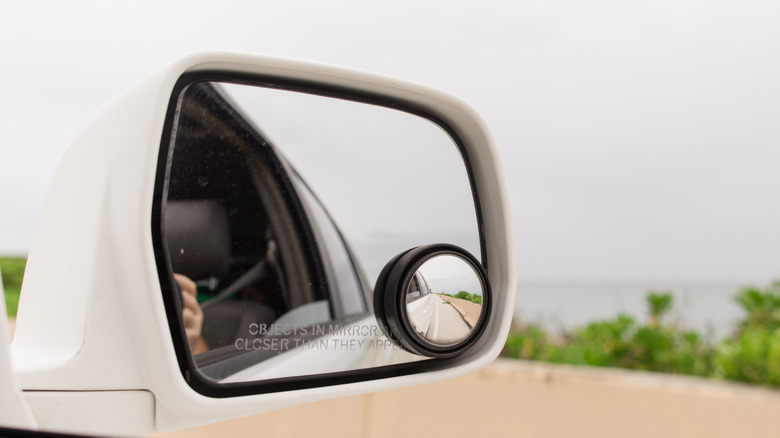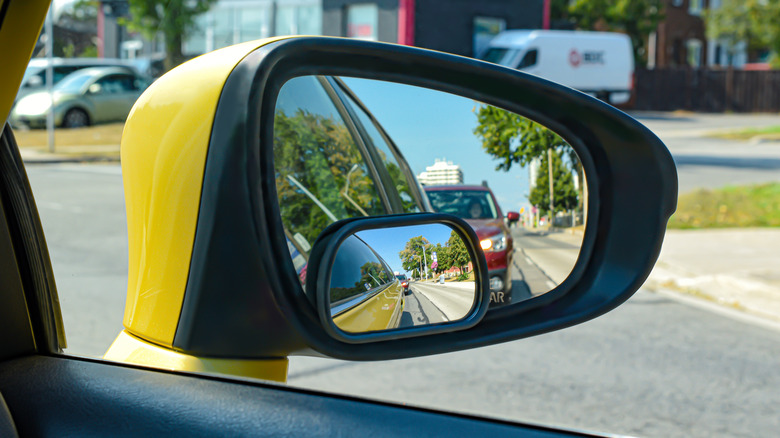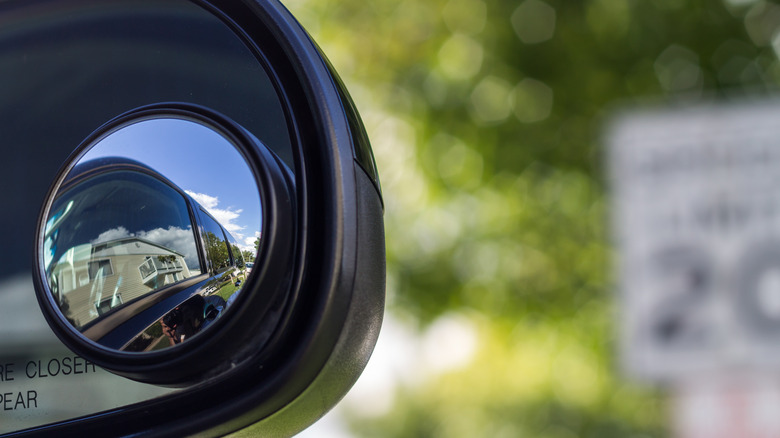What Is The Small Mirror On Your Car's Side Mirror For?
The small mirror attached to your car's side mirror is called a blind spot mirror. It's usually a small convex piece of glass added to either corner of the main side-view mirror. Its purpose is to give drivers a wider field of vision by showing areas that regular mirrors can't capture. These are the zones alongside your car where another vehicle or pedestrian might be hidden from view, commonly known as blind spots. Standard side mirrors, even when adjusted correctly, have limited coverage. That's why these small mirrors exist: to minimize blind spots in your car and reduce the risk of accidents during lane changes, merges, or turns.
Blind spot mirrors bend the reflection to show more of the road, but this comes at the cost of accurate distance perception. That's why the classic warning, "Objects in mirror are closer than they appear," applies. Drivers can see more, but need to adjust to the visual distortion. Despite this drawback, they are a simple, inexpensive solution that boosts safety, particularly in busy traffic or when driving larger vehicles with restricted rear visibility. Modern cars often integrate blind spot mirrors directly into the side mirrors, while older vehicles rely on adhesive stick-on versions.
How blind spot mirrors improve safety
Blind spot mirrors are most effective in scenarios where traffic is fast or unpredictable. By expanding the driver's field of vision, they reduce the chances of a car or bike being hidden from the driver's view during a lane change. These mirrors help cut down on collisions by covering areas that would otherwise require risky shoulder checks in dense traffic. For highway driving, the extra view makes it easier to merge into fast-moving lanes with confidence. In cities, they make spotting cyclists or pedestrians near the curb far easier.
Their safety value is especially important for drivers of trucks, SUVs, vans, and other cars with particularly bad blind spots. Larger vehicles have naturally bigger blind spots, particularly on the passenger side. For drivers towing trailers or carrying oversized loads, these mirrors become even more critical by compensating for obstructed rear views. Some blind spot mirrors are built into side mirrors by manufacturers, while others can be bought as stick-on or clip-on versions. Stick-on versions come in multiple shapes and sizes, allowing drivers to choose based on preference.
Adjusting and using them correctly
To get the most out of blind spot mirrors, proper placement and adjustment are essential. Experts recommend positioning them on the outer edge of the side mirror to maximize coverage of the blind spot area. That way, the main mirror still shows the lane directly behind the car, while the smaller mirror captures the areas the main mirror misses. Some drivers prefer them on the top corner, while others use the bottom corner; placement often depends on the vehicle design and the driver's seating position.
Beyond placement, mirror adjustment overall matters just as much. The National Highway Traffic Safety Administration recommends the "Blind Zone and Glare Elimination" method, which pushes side mirrors outward until their view just overlaps with the rearview mirror. This reduces blind spots significantly and makes the small mirror even more effective. While this setup may feel odd at first (since you won't see the side of your own car), it provides the widest and safest field of view.
Drivers should also remember that blind spot mirrors are an aid, not a replacement. They don't eliminate the need to glance over your shoulder when changing lanes or turning. Convex glass can distort shapes and distances, and weather conditions like rain or glare can further affect visibility. However, when used properly, blind spot mirrors are an inexpensive and practical upgrade to your car's safety features. But if you really want to go cutting-edge, you can consider investing in a BSD system for your car to improve your blind spot awareness.


